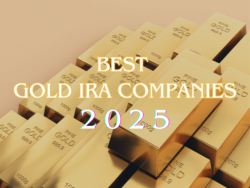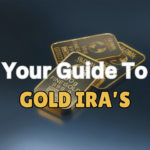
Evaluating the Safety of Gold IRAs
Investing in a Gold IRA represents a strategic move for many individuals seeking to fortify their retirement portfolios. In an era marked by economic uncertainty, inflationary pressures, and geopolitical instability, the allure of precious metals as a safe-haven asset has only grown stronger. Gold IRAs provide a unique avenue for investors to incorporate physical precious metals such as gold, silver, platinum, and palladium into their retirement plans. These metals, with their intrinsic value and historical resilience, offer a tangible hedge against the volatility of traditional financial markets.
Check out what is a Gold IRA here..
The Promise of Gold IRAs
Gold IRAs are designed to offer several key benefits that appeal to a wide range of investors. Firstly, they provide a means of diversification, moving beyond the traditional mix of stocks, bonds, and mutual funds that often dominate retirement portfolios. By including physical precious metals, investors can create a more balanced and resilient portfolio, potentially reducing overall risk and enhancing long-term returns. This diversification is particularly important in times of market turbulence, as precious metals often exhibit low correlation with other asset classes, meaning they can rise in value when stocks and bonds are falling.
Moreover, gold and other precious metals have long been recognized for their ability to act as a hedge against inflation. As the purchasing power of fiat currencies erodes over time, the value of gold tends to remain stable or even increase. This makes it an attractive asset for preserving wealth over the long term. Historical data and academic research consistently demonstrate gold’s effectiveness in maintaining its value during periods of high inflation, such as the 1970s. During this decade, the price of gold surged dramatically, providing a valuable safeguard for investors against the declining value of the U.S. dollar.
In addition to its inflation-hedging properties, gold is also a tangible asset with intrinsic value. Unlike paper assets, which are subject to the financial health and performance of companies or governments, gold’s value is inherent and does not rely on the promises of others. This tangibility can provide a sense of security and stability, especially in times of economic or geopolitical upheaval. Physical gold can be held and, if necessary, liquidated outside of traditional financial systems, offering a layer of protection against systemic risks.
While Gold IRAs offer certain advantages, they also carry inherent risks:
Potential Benefits:

Inflation Hedge
Gold has historically demonstrated a strong ability to hedge against inflation. This is particularly evident during periods of high inflation, such as the 1970s. During this decade, the United States experienced significant inflationary pressures, with the Consumer Price Index (CPI) increasing dramatically. The price of gold surged in response, rising from around $35 per ounce in 1970 to over $800 per ounce by 1980. This surge in gold prices provided a valuable hedge for investors against the eroding purchasing power of the U.S. dollar.
Academic studies and research conducted by institutions like the World Gold Council further support gold’s role as an inflation hedge. These studies analyze historical data and show a strong correlation between rising inflation rates and increasing gold prices. For example, a study by the World Gold Council found that gold’s real return (adjusted for inflation) was positive during periods of high inflation, making it an effective tool for preserving wealth.
Real-World Examples
Historical data shows that gold often outperforms traditional assets during periods of high inflation, providing a buffer against economic uncertainty. For instance, during the 2008 financial crisis, gold prices remained relatively stable while other asset classes, such as stocks and real estate, plummeted. Similarly, during the COVID-19 pandemic, gold prices surged as investors sought safe-haven assets amid economic uncertainty. These real-world examples demonstrate gold’s effectiveness in protecting wealth during turbulent economic times.
Diversification
Gold exhibits low correlation with traditional asset classes such as stocks and bonds. This means that gold prices often move independently of stock and bond prices. When stock markets decline, gold prices may rise, acting as a counterbalance and reducing overall portfolio volatility. For example, during the 2008 financial crisis, while the S&P 500 index dropped by over 37%, gold prices increased by nearly 4%. This inverse relationship can help stabilize your portfolio during market downturns.
Modern Portfolio Theory (MPT) emphasizes the importance of diversification to optimize portfolio risk and return. By incorporating gold, investors can potentially reduce overall portfolio risk and improve risk-adjusted returns. MPT suggests that combining assets with low correlation can lead to a more stable and resilient portfolio. Gold’s unique characteristics make it an ideal asset for diversification. Studies have shown that adding gold to a portfolio composed of stocks and bonds can significantly reduce overall portfolio volatility while maintaining or even improving returns.
Tangible Asset
Unlike paper assets like stocks and bonds, gold is a tangible asset with intrinsic value. This tangibility can provide a sense of security and a hedge against systemic risks that may affect financial markets. Physical gold carries no counterparty risk because its intrinsic value doesn’t depend on another party’s performance or obligations. In contrast, stocks and bonds are subject to the financial health and performance of the issuing company or government. Gold’s physical nature means it retains value regardless of economic or political upheavals, making it a reliable store of wealth.
Long-Term Appreciation
Over the long term, gold has demonstrated potential for appreciation, often increasing in value over decades. By including gold in your IRA, you can benefit from this historical growth trend, potentially enhancing your retirement savings and overall investment returns. For example, from 2000 to 2020, the price of gold increased from around $275 per ounce to over $1,900 per ounce, representing a significant increase in value. This long-term appreciation makes gold an attractive investment for those looking to build wealth over time.
Protection Against Currency Devaluation
Gold often retains or increases its value when fiat currencies, like the U.S. dollar, lose purchasing power. Since gold is priced in dollars, when the dollar weakens, gold prices may rise. Investing in a Gold IRA helps protect your retirement savings from currency devaluation, ensuring your assets maintain their worth. For instance, during periods of high inflation or economic instability, the dollar’s value can decline significantly. In such scenarios, gold’s value typically remains stable or increases, providing a hedge against currency devaluation.
Limited Supply
Gold’s limited supply and the difficulty of mining contribute to its enduring value. Since gold cannot be produced at will due to costly and time-consuming extraction, its scarcity can drive up value over time. Including gold in your IRA capitalizes on this scarcity, potentially increasing your asset’s value. The finite nature of gold means that as demand increases, especially from emerging markets and central banks, the price is likely to rise. This scarcity makes gold a valuable asset for long-term investment.
Potential Hedge Against Geopolitical Risks
Gold often maintains or increases its value during geopolitical tensions and conflicts, as seen in historical events where gold prices rose amid wars and political unrest. By holding gold in your retirement portfolio, you can hedge against financial uncertainties arising from global events, adding stability to your long-term savings. For example, during the Gulf War in the early 1990s and the 9/11 attacks, gold prices surged as investors sought safe-haven assets. This trend has been consistent throughout history, making gold a reliable hedge against geopolitical risks.
Potential Risks:

While Gold IRAs offer several attractive benefits, they also come with inherent risks that investors must carefully consider. Understanding these risks is crucial for making informed investment decisions and ensuring that a Gold IRA aligns with your financial goals and risk tolerance.
Price Volatility
Gold prices can fluctuate significantly, influenced by various factors such as global economic conditions, geopolitical events, and investor sentiment. These price swings can create volatility in your investment portfolio. For example, during periods of economic stability and low inflation, gold prices may remain relatively stable or even decline. Conversely, during times of economic uncertainty or geopolitical tension, gold prices can surge dramatically.
- Global Economic Conditions: Economic indicators such as GDP growth, interest rates, and inflation rates can impact gold prices. For instance, during periods of high inflation, gold often performs well as investors seek a hedge against rising prices. However, in a low-inflation environment, gold may underperform relative to other asset classes.
- Geopolitical Events: Political instability, conflicts, and global tensions can drive up the demand for gold as a safe-haven asset. For example, during the Gulf War in the early 1990s and the 9/11 attacks, gold prices surged as investors sought protection against uncertainty.
- Investor Sentiment: Market sentiment and investor behavior can also influence gold prices. If investors are optimistic about the stock market and economic growth, they may allocate less to gold, causing its price to drop. Conversely, during periods of market pessimism, gold can become more attractive, leading to price increases.
Storage Costs
Storing precious metals in an IRS-approved depository incurs annual fees. These costs can vary depending on the amount of metal stored and the chosen depository. While these fees are generally reasonable, they can add up over time and impact the overall return on your investment.
- Annual Fees: Depositories charge annual storage fees to cover the costs of maintaining secure facilities, insurance, and other operational expenses. These fees can range from a few hundred dollars to several thousand dollars per year, depending on the amount and type of metals stored.
- Insurance and Security: Additional costs may include insurance and security measures to protect your assets. Ensuring that your gold is safely stored and insured is crucial, but these costs need to be factored into your overall investment strategy.
- Long-Term Impact: Over time, storage costs can accumulate and reduce the net returns on your investment. It’s essential to consider these costs when evaluating the potential benefits of a Gold IRA.
Limited Liquidity
Selling gold within an IRA can be more complex and time-consuming compared to liquidating stocks or bonds. The process often involves more paperwork and coordination with your custodian and depository, which can delay the realization of funds.
- Complexity of Selling: Unlike stocks and bonds, which can be sold quickly through brokerage accounts, selling gold in an IRA requires additional steps. You may need to coordinate with your custodian to arrange the sale and ensure compliance with IRS regulations.
- Market Conditions: The liquidity of gold can also be affected by market conditions. During periods of high demand or market volatility, it may take longer to sell your gold at a fair price. This can be particularly problematic if you need to access funds quickly.
- Transaction Costs: Selling gold may also involve transaction costs, including fees charged by the depository and custodian. These costs can further reduce the net proceeds from the sale.
Counterparty Risk
There’s a risk associated with the financial stability of the custodian and depository. If these institutions experience financial difficulties, it could potentially impact the safety and accessibility of your investment. Ensuring that your custodian and depository are financially stable and reputable is crucial to mitigate this risk.
- Custodian Stability: The custodian is responsible for managing your Gold IRA and ensuring compliance with IRS regulations. If the custodian experiences financial difficulties or goes out of business, it could impact your ability to access and manage your investment.
- Depository Stability: The depository is responsible for the safe storage of your physical gold. If the depository faces financial issues or security breaches, it could compromise the safety of your assets.
- Regulatory Compliance: Both the custodian and depository must be fully compliant with IRS regulations and industry standards. Ensuring that these institutions are reputable and financially stable can help protect your investment from potential regulatory issues.
Regulatory Changes
Changes in IRS regulations or tax laws could impact the tax benefits and overall attractiveness of Gold IRAs. Staying informed about regulatory changes and working with a knowledgeable financial advisor can help you navigate these potential changes.
- IRS Regulations: The IRS has specific rules and regulations governing Gold IRAs, including the types of precious metals that can be included, storage requirements, and reporting obligations. Changes to these regulations could impact the way Gold IRAs are managed and taxed.
- Tax Laws: Tax laws can also change, potentially affecting the tax benefits associated with Gold IRAs. For example, changes in capital gains tax rates or retirement account contribution limits could impact the overall attractiveness of investing in gold.
- Future Uncertainty: The regulatory environment is always subject to change, and future regulations could affect the way Gold IRAs are managed and taxed. Being proactive and staying informed is key to managing these risks.
Navigating the “Free” Gold IRA Kit Landscape.

The Reality of “Free” Gold IRA Kits (What is a Gold IRA Kit)
“Free” Gold IRA kits are often marketing tools used by precious metals companies to attract potential investors. While some kits may provide basic information about Gold IRAs, many are designed to generate leads and initiate high-pressure sales tactics. These kits can be a valuable starting point for learning about Gold IRAs, but it’s essential to approach them with caution and skepticism. Here are some red flags to watch out for:
Aggressive Sales Tactics
Beware of companies that employ high-pressure sales tactics, urging immediate investment decisions or pressuring you into making quick decisions. These tactics are designed to bypass your rational decision-making process and push you into committing to an investment before you have fully considered the implications.
- Urgency Tactics: Salespeople may use phrases like “limited-time offer” or “act now” to create a sense of urgency. They might claim that gold prices are about to surge or that a particular investment opportunity is about to close.
- Fear-Based Selling: Some companies may try to scare you into investing by exaggerating economic risks or geopolitical threats. They might claim that traditional investments are on the verge of collapse and that gold is the only safe option.
- Emotional Appeals: High-pressure sales tactics often appeal to emotions rather than logic. Salespeople may try to make you feel like you’ll miss out on a once-in-a-lifetime opportunity if you don’t act immediately.
Hidden Fees
“Free” kits may be a precursor to hidden fees or commissions that can significantly impact your investment returns. While the initial kit may seem like a no-cost resource, the real costs often become apparent later in the process.
- Storage Fees: One of the most common hidden costs is associated with storing your precious metals. IRS regulations require that physical gold be stored in an approved depository, and these storage fees can add up over time.
- Transaction Fees: There may be fees associated with buying and selling gold within your IRA. These fees can eat into your returns, especially if you plan to trade frequently.
- Account Management Fees: Some companies charge ongoing management fees for maintaining your Gold IRA. These fees can vary widely and may not be clearly disclosed upfront.
Misleading Information
Some kits may contain inaccurate or misleading information about Gold IRAs, their benefits, and associated risks. They may overemphasize potential returns while downplaying the inherent risks.
- Overstated Returns: Be wary of claims that gold will always increase in value or that it’s a guaranteed investment. While gold has historically shown resilience, it is not immune to market fluctuations.
- Understated Risks: Some kits may fail to mention the potential downsides of investing in gold, such as price volatility, storage costs, and limited liquidity.
- Selective Data: Companies may present data in a way that highlights only the positive aspects of gold investing while ignoring or downplaying negative trends.
Data Collection and Privacy Concerns
“Free” kits are often used to collect your personal information, which may be used for marketing purposes, sold to third parties, or even used for identity theft.
- Marketing Purposes: The information you provide when requesting a kit may be used to bombard you with marketing materials, phone calls, and emails from the company and its affiliates.
- Third-Party Sales: Some companies sell your personal information to third parties, who may then contact you with their own offers and promotions.
- Identity Theft Risks: Sharing your personal information online always carries some risk. Ensure that the website you are using to request the kit is secure and that the company has a good reputation for protecting customer data.
Lack of Transparency
Companies offering “free” kits may lack transparency regarding their fees, business practices, and any potential conflicts of interest. This lack of transparency can make it difficult to fully understand the costs and risks associated with investing in a Gold IRA.
- Opaque Fee Structures: Some companies may not clearly disclose all the fees associated with setting up and maintaining a Gold IRA. This can lead to unexpected costs down the line.
- Conflicts of Interest: Be aware of any potential conflicts of interest. For example, a company that sells both gold and IRA management services may have an incentive to steer you towards more expensive products or services.
- Reputation and Reviews: Always research the company’s reputation and read reviews from other investors. Look for signs of transparency, such as clear fee disclosures, detailed information about their services, and a track record of satisfied customers.
Evaluating the Legitimacy of a “Free” Gold IRA Kit
When considering a “free” Gold IRA kit, it’s crucial to evaluate its legitimacy to ensure you’re making an informed and secure investment decision. Here’s a detailed guide on how to do this:
Thorough Research
Research the Company Offering the Kit Thoroughly:
- Reputation and Reviews: Start by researching the company’s reputation. Look for customer reviews and testimonials on reputable websites and forums. Pay attention to both positive and negative feedback to get a balanced view.
- Regulatory Compliance: Verify the company’s licensing and credentials with relevant regulatory bodies such as the Securities and Exchange Commission (SEC) or your state’s securities regulator. Ensure they are in good standing and have no pending legal issues.
- Industry Recognition: Check if the company is a member of industry associations like the Better Business Bureau (BBB) or the National Gold & Silver Exchange (NGSE). Membership in these organizations often indicates a commitment to ethical business practices.
Look for Any Complaints or Negative Reviews:
- Customer Complaints: Search for any complaints or negative reviews from previous customers. Pay particular attention to issues related to customer service, hidden fees, and misleading information.
- Online Reviews: Use platforms like Trustpilot, Yelp, and Google Reviews to gather insights from other investors. Look for patterns in the feedback to identify recurring problems.
- Regulatory Actions: Check if the company has faced any regulatory actions or fines. This information can often be found on the websites of regulatory bodies like the SEC or the Financial Industry Regulatory Authority (FINRA).
Check out our picks of .. The Best Gold IRA companies in 20205

Due Diligence
Carefully Review All Materials Provided in the Kit:
- Disclosures and Fee Schedules: Carefully read through all the materials provided in the kit, including any disclosures, fee schedules, and fine print. Ensure you understand all the costs associated with setting up and maintaining a Gold IRA.
- Investment Options: Review the investment options offered. Ensure they align with your investment goals and risk tolerance. Be wary of any overly simplified or overly optimistic claims.
- Storage and Custody: Understand the storage and custody arrangements. Ensure the depositories are IRS-approved and have a good reputation for security and reliability.
Be Wary of Overly Simplified or Optimistic Claims:
- Realistic Expectations: Be skeptical of any claims that seem too good to be true. Gold investments, like any other, come with risks and should not be presented as a guaranteed path to wealth.
- Balanced Information: Look for kits that provide balanced information, discussing both the benefits and risks of Gold IRAs. Avoid companies that only highlight the positives without addressing potential downsides.
Seek Independent Verification
Consult with a Qualified Financial Advisor:
- Unbiased Advice: Seek advice from a qualified financial advisor who can provide unbiased and objective guidance. A financial advisor can help you evaluate the information provided in the kit and assess whether a Gold IRA is suitable for your financial goals.
- Fee-Only Advisors: Consider working with a fee-only advisor who does not earn commissions from the sale of investment products. This can help ensure that the advice you receive is free from conflicts of interest.
- Second Opinions: If possible, get a second opinion from another financial professional. Different advisors may have different perspectives, and getting multiple viewpoints can help you make a more informed decision.
Verify Information with Multiple Sources:
- Cross-Check Data: Verify the information provided in the kit with multiple sources. Look for corroborating data from reputable financial publications, academic studies, and industry reports.
- Stay Informed: Keep yourself updated on the latest trends and developments in the gold market. This can help you better understand the information provided in the kit and make more informed investment decisions.
Key Takeaways:
- Gold IRAs can offer diversification benefits and inflation protection, but they are not without risk.
- Be wary of “free” Gold IRA kits and approach them with caution.
- Conduct thorough research, prioritize transparency, and seek professional guidance from a qualified financial advisor before making any investment decisions.
- Carefully evaluate the reputation and credentials of any company offering Gold IRA services.
- Understand the associated costs and risks before making any investment decisions.
Disclaimer: This information is for educational purposes only and does not constitute financial advice.







